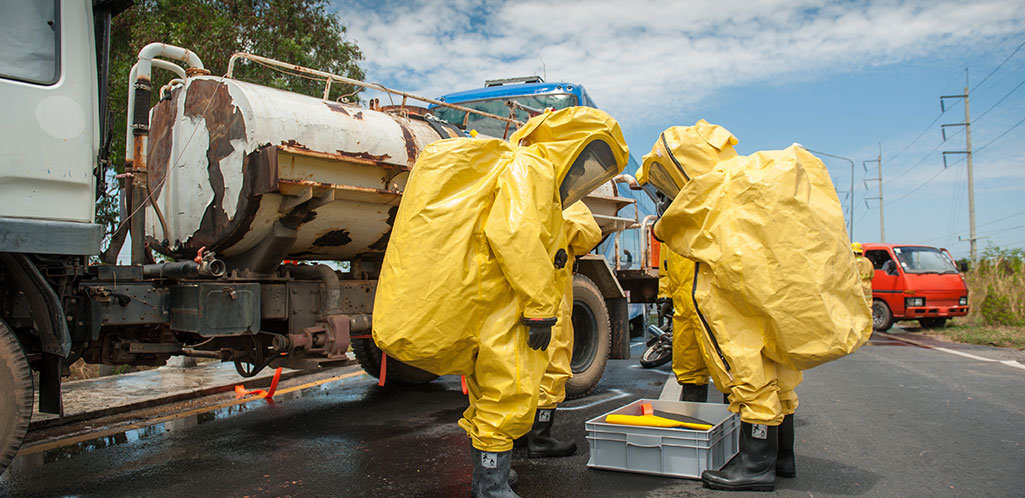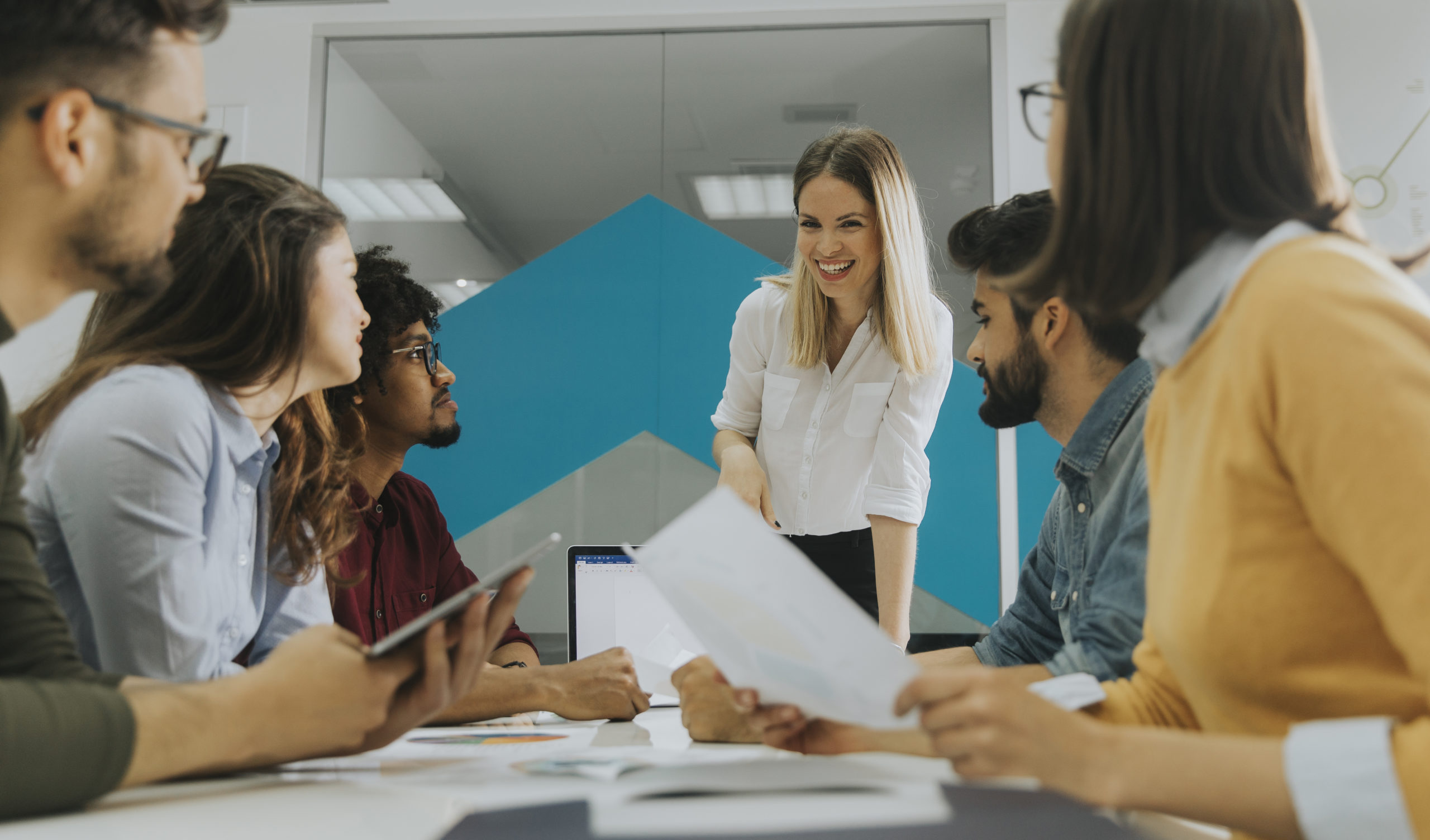Becoming an Effective Speaker
THE IMPORTANCE OF STRONG PUBLIC SPEAKING Strong speaking skills will set you apart, make you feel more confident, and give you the ability to take on leadership roles. Public speaking offers one of the most effective ways to get your point across, demonstrate your knowledge, and influence others. It can even help you stay organized and improve your writing and interpersonal communication. Many people who appear completely comfortable in front of crowds started out with a significant fear of public speaking. By overcoming this fear, practicing, and gaining confidence, you can have more advantages in life. STRATEGIES TO BECOME AN [...]
Building a Safety Program
Workplace fatalities, injuries, and illnesses are preventable. Safe workplaces exist because employers make the choice to fulfill their responsibilities and protect their workers. Workers shouldn’t need to put their lives at risk to make a living. The system should train workers to be aware of and appreciate safety issues. A well-defined safety program benefits and advances the best interests of everyone. SAFETY PROGRAM DEVELOPMENT Step 1. Make the Commitment to Safety with a Mission Statement. Document safety goals so they can be measured and improved. Step 2. Industry Requirements Check out all resources made available including other professionals in the [...]
Hearing Protection PPE Requirements
Employees must be given a selection of several types of hearing protection to choose from. For routine noise levels, earplugs, canal caps or earmuffs can be used. There are many styles and sizes, some even designed to allow the wearer to “hear” conversations while providing a barrier to extremely loud sound levels. For extremely loud areas, such as working around jet engines, special ear muffs are designed for more significant noise reduction. Your vendor can help you make some choices. If you do not have a vendor, interview several before you select one. When making your selection you should consider [...]
Meeting Minutes – Tips and Tricks
SIMPLE TIPS FOR BETTER MEETING MINUTES Meeting minutes help with communication at work and they ensure people have a common understanding of what the meeting was about, what was done, and what they should be doing next. PURPOSE OF MINUTES Minutes are particularly helpful for formal meetings as they serve as a permanent record of the discussion and the decisions that were made. A written record of the meeting in the form of minutes can be especially useful for people who were not able to attend in person as they get to see what came up in the meeting. TIPS [...]
5 Steps to Emergency Preparedness
If the California flooding has taught us anything, it's that emergencies can happen at any time. Your workers play a key role in the execution of your company’s emergency preparedness plan. Given the current conditions, maybe it’s a good time to review the topic of emergency preparedness with your workers and go over the 5 steps to emergency preparedness. Step 1: Evaluate Your Existing Plans Your first step is to review and re-evaluate your company’s emergency response plan, making sure that plans are in place for all possible types of emergencies. These can include, but aren’t limited to: Fires and [...]
How to Use Total Cost Assessment to Demonstrate Business Value of Your Safety Initiatives
Convincing senior management to invest in safety initiatives can be an uphill battle, especially when the initiative isn’t specifically required by law. Of course, demonstrating that the initiative will cut costs and/or boost revenues is a great way to sell it to the business people who control the purse strings. But doing so is easier said than done. So how can you demonstrate that a safety initiative will have a positive effect on your company’s bottom line? One possibility is to use Total Cost Assessment (TCA), an accounting method that’s designed to measure the true profitability of EHS investments. Although TCA is [...]
When Does the Lockout Tagout Standard Apply?
OSHA’s Control of Hazardous Energy (Lockout/Tagout) general industry standard covers the servicing and maintenance of machines and equipment in which the unexpected energization or startup of machines or equipment, or release of stored energy, could cause injury to employees. Employees servicing or maintaining machines or equipment may be exposed to serious physical harm or death if hazardous energy is not properly controlled. The Lockout/Tagout (LO/TO) standard establishes minimum performance requirements for the control of hazardous energy sources such as electrical, mechanical, hydraulic, pneumatic, chemical, and thermal. 29 CFR 1910.147(a)(1)(ii)(A-E) of the general industry standard identifies the following areas the standard [...]
PPE for Spill Cleanup – Quick Tips
Employees who are engaged in emergency spill response operations no matter where they occur are covered by the Occupational Safety and Health Administration’s (OSHA’s) Hazardous Waste Operations and Emergency Response (HAZWOPER) standard, 29 Code of Federal Regulations (CFR) 1910.120. As first steps in limiting worker exposure to spill hazards, engineering controls and administrative (work practice) controls must first be considered. If circumstances prohibit the use of engineering controls or work practices, or these measures do not sufficiently reduce worker exposures, OSHA mandates that personal protective equipment (PPE) be used. Once the need for PPE is established, a careful evaluation of [...]
Personal Liability of CEOs for OSHA Violations
Make sure your CEO understands that he or she can be held personally liable for certain safety violations. Give your CEO this briefing to make your case. OSHA cited two New Jersey corporations for willful violations. One citation carried a $96,300 fine; the other a $196,000 fine. In both cases, OSHA also cited the father-and-son team that owned the corporations. The father was the president and the only officer and director of both corporations. The son, a lawyer whose only clients were the corporations, ran the corporate offices out of his basement. Corporate officers normally aren’t personally liable for the [...]
Selling Management on the Value of Safety Perception Surveys
As safety budgets shrink, companies are under mounting pressure to ensure that every dollar they spend on safety programs, activities and equipment directly helps to improve safety performance. But in making decisions about how to reduce injuries and illnesses, companies often overlook a crucial factor: the perceptions of their own workers. Studies show that workers’ perceptions of a company’s safety culture and senior management’s commitment to safety have a measurable impact on injury rates. More precisely, the evidence suggests that in companies with low injury rates, a high percentage of workers have a positive perception of management’s commitment to safety; [...]
Visitor Safety & Security
Just about every workplace has them — visitors. How can you help them stay safe while they tour your work area? Like most companies, you probably have a well developed workplace safety policy to protect your workers. But does that policy cover contractors, visitors and temporary workers (which, for the sake of simplicity, we’ll refer to collectively as “visitors”) who come to your facilities? Failure to account for visitors is a huge blind spot that can lead not only to injuries but liability. And even if you do have a visitors’ safety policy, you need to ensure that it’s effective. [...]
Safety Rewards and Incentives that Result in Safety Improvements
If used correctly, safety rewards and incentives can be very effective. Rewards foster accountability. Rewarding people for positive things gets them to do those things. It’s basic human behavior. People want to get caught doing the right thing. These principles should be used to improve safety performance. Selecting the Right Rewards Different levels of an organization should be rewarded for different things. The reward should be tailored to the result the individual can control. Thus, rewards for people at lower levels should be based primarily on activities rather than organizational results. It’s pointless to base a front-line shift worker’s reward on [...]













